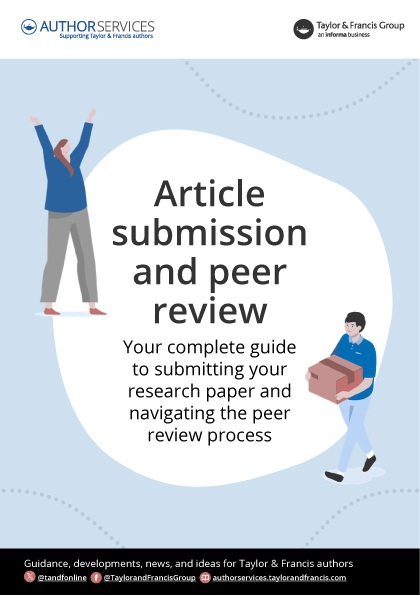How does peer review support integrity in research?
Three ways peer review builds trust in scholarly communication

The topic of integrity in research has become increasingly pressing in recent years. The ongoing reproducibility crisis, the emergence of misinformation and “fake news” across social media, and the acceleration of content sharing through preprints have all played a role in this.
This Peer Review Week we’re speaking to peer review and integrity experts from across Taylor & Francis, examining how the peer review process can help to foster a culture of trust. As a submitting author, it’s important to understand not just the nuts and bolts of the reviewing process, but also how it adds credibility to you (and your work).
Let’s dig into three key ways the review process supports integrity in research.
“Peer review is one of the most important parts of scholarly publishing, and is a key factor that increases trust in journal content.”
Rebecca Furlong, Head of Reviewer Programmes at Taylor & Francis
Peer reviewers are experts in their fields
Peer reviewed papers are trustworthy because they are examined and approved by invited experts in the field. Peer reviewers are not members of the general public, but individuals who are carefully selected and invited by journal editors, according to strict criteria. This ensures they have the relevant experience and knowledge to review the manuscript in question effectively.
“Reviewers on Taylor & Francis journals are individuals with evidence of a high level of authority in the field, topic, or technique. This will usually include senior academics, who have a deep understanding of the field and the overall value of the work” says Rebecca Furlong.
Furthermore, peer reviewers have a range of training and support available to them, to help them write reports which are effective and fair.
Post information
Related posts
“Peer review is one of the most important parts of scholarly publishing, and is a key factor that increases trust in journal content.”
Rebecca Furlong, Head of Reviewer Programmes at Taylor & Francis
Peer review is a rigorous process
Peer review supports integrity in research through the rigor of the process itself. If your article is being peer reviewed, it’s not just being read by an expert in the field – it’s being scrutinized in detail, so that readers can trust in the validity and accuracy of the research they’re reading.
Reviewers consider a wide range of factors when reviewing a manuscript, such as:
The originality of the work
Whether the methodology is appropriate
Whether the work engages with relevant scholarship on the same topic
The significance of any results (to name just a few)
In addition, they will often ask to see the raw data underpinning the research findings, in order to validate results for themselves.
And it’s not just Research Articles which undergo rigorous peer review either, but an increasingly wide range of article types.
“Method Articles, Case Reports, or Data Notes are all valuable additions to the academic literature. Just as Research Articles need peer review to ensure that everything is as it should be, so do these article types. Reviewing ensures that any issues are caught before they are perpetuated into the wider academic community.”
Elle Papas, Peer Review Manager at F1000
Transparency in open peer review puts integrity at the center

While traditional, closed peer review supports trust in research in many ways, open peer review models like the one used at F1000 take this one step further.
If your work is published on F1000Research, it will undergo fully transparent peer review after publication. This means that the reports themselves are published (including the names and affiliations of the reviewers) alongside your article. The transparency of this open peer review model supports integrity in research. Readers can verify for themselves the expertise of the reviewers, the rigor of their reviews, and even see how the authors responded to reviewer comments.
“On F1000Research, not only is the peer review report itself available, allowing readers to see exactly what the peer reviewers thought of an article, but reviewer names and Conflict of Interest statements are also included, so their expertise can be independently validated by anyone. Of course, we don’t just leave it to readers to verify these things – every invited reviewer is checked against our peer reviewer criteria to ensure they have the right subject knowledge to review, and they can do it independently,” Elle Papas says.
“Peer review is an integral part of the process of selecting trustworthy research to be published. There are many different models of peer review, but they all uphold a system of critical expert assessment prior to publication and dissemination. Especially in an age of information overload, this method of expert review remains crucial.”
Sabina Alam, Director of Publishing Ethics & Integrity

Download the article submission and peer review free guide
Download your complete guide to submitting your research paper and navigating the peer review process.
Where to next?
If you’ve found this blog helpful make sure you look at:
Our Insights newsletter – the latest news, tips, and resources delivered straight to your inbox.